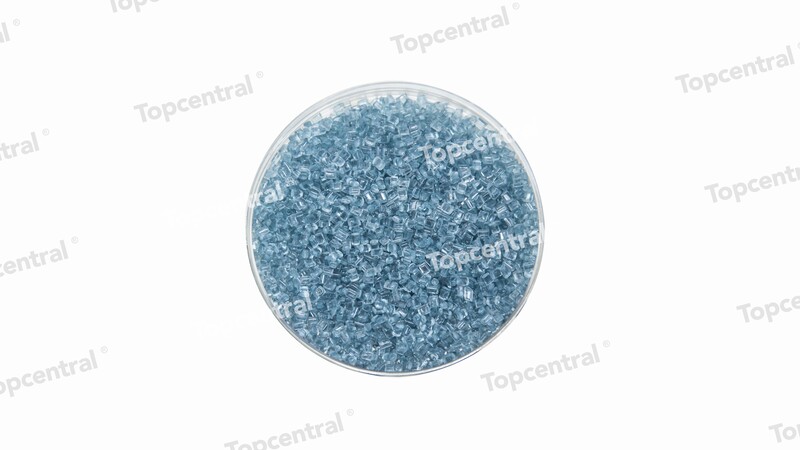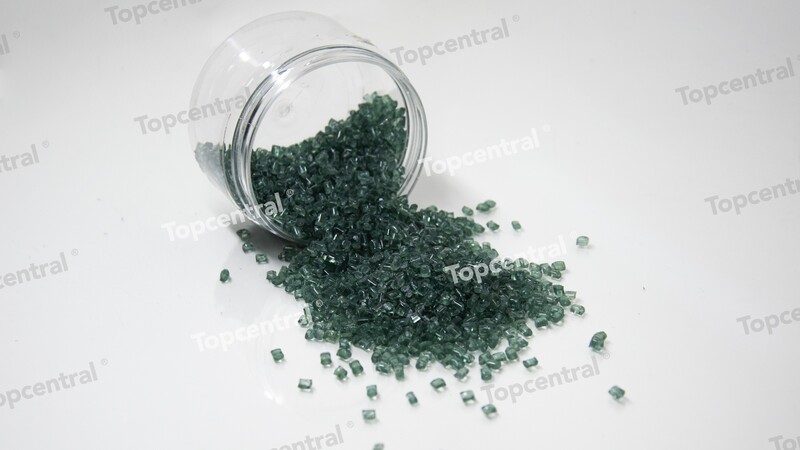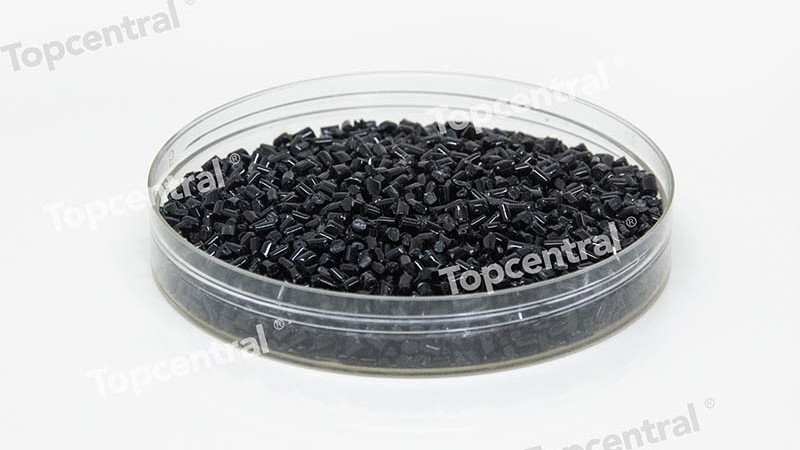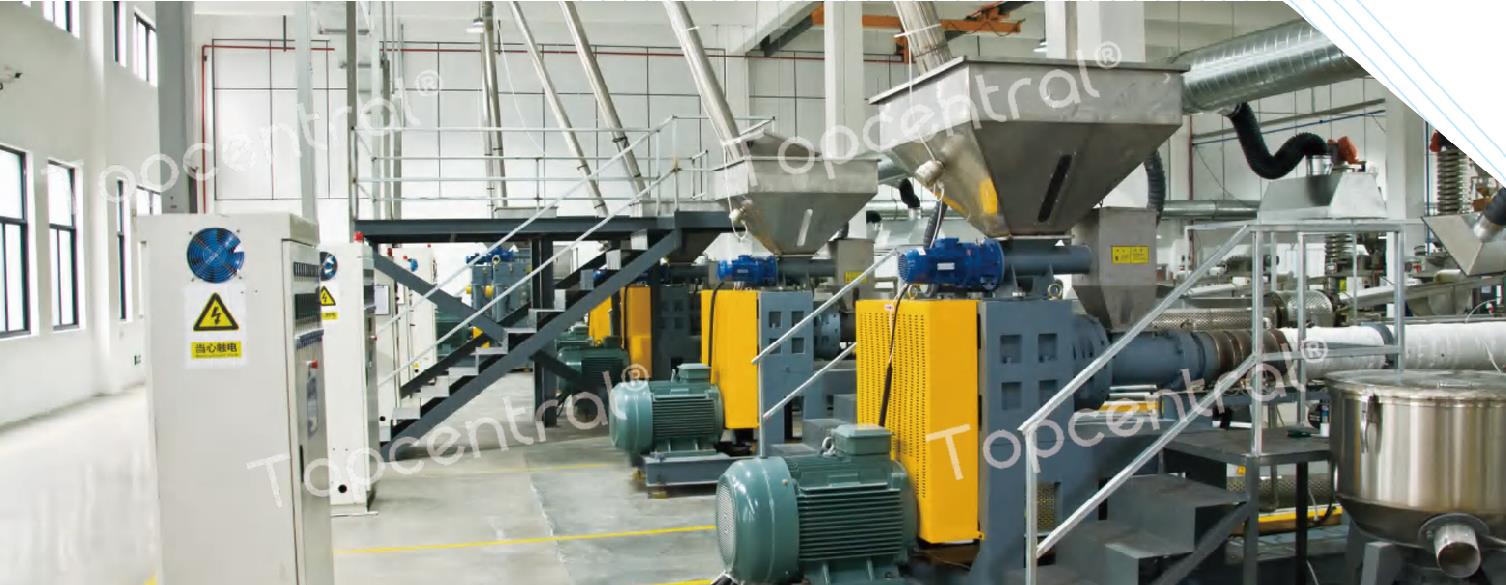
PCR Polycarbonate (PCR Pc® rPC)is a recycled post-consumer product(sources include but not limited to drinking water buckets,transparent sheets,lamp cover, transparent container,lens,cD/VcD/DvD disks,etc.),which is manufactured by the technological process of pre- treatment,standardized pelletized and modified etc. According to different recycling sources and quality grades. Topcentral could provide customers with extrusion and injection grade PCR Pc particles.Our products cover different molecular, color and properties and customized products can be provided according to the specific requirements of customers,including extrusion, blow molding,injection molding Compounding, etc.




| Typical Grade | MFR g/10min | Notched Impact Strength J/m | Color Appearance | Certification | Typical Application | Product Features | Carbon emissions ton CO2e |
|---|---|---|---|---|---|---|---|
| PC-T15 | 15-20 | ≥700 | Transparent | GRS/ISCC PLUS | Injection Molding Modification | Little Black Spot, transparency and high impact resistance | 0.7126 |
| PC-T20 | 20-25 | ≥600 | Transparent | GRS | Injection Molding Modification | Little Black Spot, transparency and flow processing | 0.72 |
| PC-T25 | 25-30 | ≥100 | Transparent | GRS | Injection Molding Modification | Little Black Spot, transparency and fluidity | 0.7287 |
| PC-T50 | 50-60 | ≥100 | Transparent | GRS | Injection Molding Modification | Little Black Spot, transparency and superhigh fluidity | 0.7466 |
| PC-T80 | 60-80 | ≥80 | Transparent | GRS | Injection Molding Modification | Little Black Spot, transparency and superhigh fluidity | 0.7812 |
| PC-WB01 | 6~12 | ≥700 | Blue Transparent | GRS/UL 2809/Zero-carbon/ISCC PLUS | Injection Molding Extrusion, Modification | Color stability and high impact resistance | 0.6712 |
| PC-WB02 | 12-25 | ≥500 | Dark Transparent | GRS/UL 2809/Zero-carbon/ISCC PLUS | Injection Molding Modification | Dark Color,Cost Economic | 0.6875(PCF C) |
| PC-WB03 | 25-35 | ≥300 | Dark Transparent | GRS/UL 2809/Zero-carbon/ISCC PLUS | Injection Molding Modification | Dark Color, Cost Economic | 0.7017 |

| Typical Grade | MFR g/10min | Notched Impact Strength J/m | Color Appearance | Certification | Typical Application | Product Features | Carbon emissions ton CO2e |
|---|---|---|---|---|---|---|---|
| PC-BG105 | 17~25 | ≥110 | Black, High Gloss | GRS | Injection Molding Modification | High Gloss Appearance | 0.7912 |
| PC-T103AR | 12~18 | ≥700 | Transparent | GRS | Injection Molding | Compliance With Toy Regulations | 0.7216 |
| PC-FT315 | 12~16 | ≥700 | Transparent | GRS/UL2809 | Injection Molding | FDA | 0.7823 |
| PC-T08A | 5~9 | ≥700 | Natural transparent | GRS/ISCC PLUS | Injection Molding Modification | Black spot control, color temperature and high impact resistance | 0.7088 |
| Typical Grade | MFR g/10min | Notched Impact Strength J/m | Color Appearance | Certification | Typical Application | Product Features | Carbon emissions ton CO2e |
|---|---|---|---|---|---|---|---|
| PC-IT3020BTL | 15~21 | ≥500 | Black Transparent | UL2809 ITE/GRS /ISCC PLUS/UL OBP | Injection Molding Modification | ITEcycle® | 0.7357 |
| PC-2010BK | 15~25 | ≥100 | Black | UL2809/GRS /ISCC PLUS/UL OBP | Injection Molding Modification | ReAutoloop® | 0.7565 |
| PC-ET08A | 6~9 | ≥750 | Transparent | GRS/ISCC PLUS/UL OBP | extrusion Modification | high viscosity | 0.7817 |
| PC-BP78A | 7~12 | ≥600 | Blue Transparent | GRS/ISCC PLUS/UL OBP | Injection Molding Extrusion, Modification | Coastbound® OBP | 0.6936 |
| PC-IT70A | 65~75 | ≥80 | Natural transparent | GRS/ISCC PLUS | Modification | ITEcycle® | 0.8916 |
| PC-RA35A | 30~40 | ≥400 | Natural transparent | GRS/ISCC PLUS | Modification Injection molding | ReAutoloop® | 0.774 |
| PC-RA20A | 15~25 | ≥110 | Black | GRS/ISCC PLUS | Modification | ReAutoloop® | 0.7461 |
| Typical Grade | MFR g/10min | Notched Impact Strength J/m | Color Appearance | Certification | Typical Application | Product Features | Carbon emissions ton CO2e |
|---|---|---|---|---|---|---|---|
| PC-T103A | 12~18 | ≥600 | Transparent | UL 2809/ISCC PLUS GRS/Zero-carbon | Injection Molding Extrusion, Modification | FreeCB02® | 0.7147 (PCF C) |
| PC-T105A | 15~25 | ≥600 | Transparent | UL 2809/ISCC PLUS GRS/Zero-carbon | Injection Molding Modification | FreeCB02® | 0.8146 (PCF C) |
| PC-T108A | 65~75 | ≥100 | Transparent | UL 2809/ISCC PLUS GRS/Zero-carbon | Injection Molding Modification | FreeCB02® | 0.8557 (PCF C) |
| PC-T60A | 50~60 | ≥100 | Transparent | UL 2809/ISCC PLUS GRS/Zero-carbon | Injection Molding Modification | FreeCB02® | 0.6854 (PCF C) |
| PC-WB101A | 4~10 | ≥600 | Blue Transparent | UL 2809/ISCC PLUS GRS/Zero-carbon | Injection Molding Extrusion, Modification | FreeCB02® | 0.6724 (PCF C) |
| PC-GT02A | 12~20 | ≥500 | Blue Transparent | UL 2809/ISCC PLUS GRS/Zero-carbon | Injection Molding Modification | FreeCB02® | 0.7322 (PCF C) |

Topcircle®,TCycleEP,PCRPc,Coastbound OBP,FreeCB02°(“Zero" Carbon),ITEcycle ;

Products can be used for compounding, injection molding,extrusion, and produce different plastic products such as modified,switch,electrical equipment shell, lampshade, toy, etc.


We offer a wide variety of materials, including general plastics, engineering plastics, and specialty plastics, covering almost all types of recycled polymers.

With a dedicated R&D team, we continuously innovate and develop high-performance, customized material solutions to meet diverse industry needs.

From research and testing to manufacturing and sales, we provide end-to-end solutions, streamlining the supply chain for our clients.

Our products promote low-carbon, circular economy practices,supporting global sustainability efforts with bio-based and degradable materials.
Sustainable low - carbon functional materials are applied across numerous critical areas. In the energy sector, they are pivotal. For instance, advanced photovoltaic materials with low - carbon manufacturing processes are used to construct more efficient solar panels. These materials enhance the conversion of sunlight into electricity, contributing to the expansion of renewable energy sources and reducing reliance on fossil fuels.
In the textile industry, sustainable low - carbon functional materials are making waves. Bio - based and recycled fibers are being used to create fabrics. These materials not only consume less energy during production but also have a lower environmental impact compared to traditional synthetic fibers. Moreover, some functional textiles made from these materials can regulate body temperature, repel water, or provide UV protection, all while maintaining a low - carbon footprint.
In the textile industry, sustainable low - carbon functional materials are making waves. Bio - based and recycled fibers are being used to create fabrics. These materials not only consume less energy during production but also have a lower environmental impact compared to traditional synthetic fibers. Moreover, some functional textiles made from these materials can regulate body temperature, repel water, or provide UV protection, all while maintaining a low - carbon footprint.


